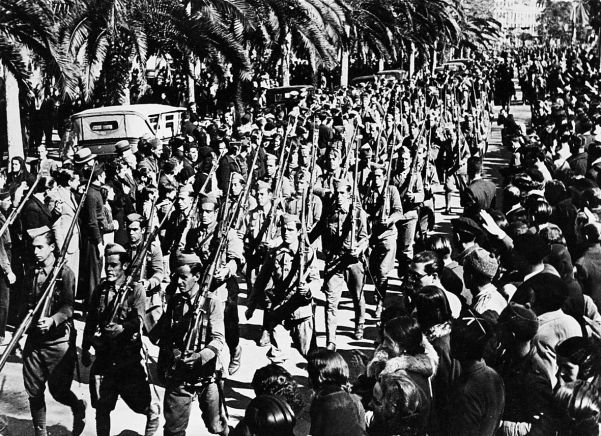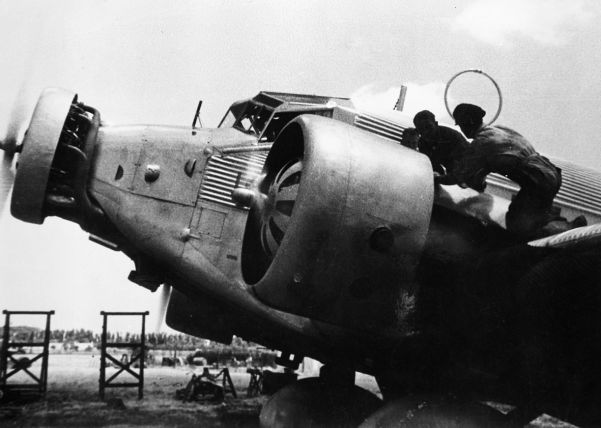2 July
SS, Ideology
Himmler lays a wreath on the empty tomb of the Saxon King Heinrich I, who was nicknamed Henry the Fowler, on the occasion of the thousandth anniversary of his death. Himmler also participated in a solemn ceremony in the crypt of Quedlinburg Cathedral. He regards himself as the embodiment of this warrior king, who had defeated the Slavs and was founder of the German Reich.
11 July
Germany, Treaties
The “Gentleman’s Agreement” between Hitler and Schuschnigg of Austria, in which Hitler recognizes the full sovereignty of Austria and in return Schuschnigg acknowledges that Austria is an “German State”, agrees to admit members of the so-called “National Opposition” into his government and give amnesty to Nazi political prisoners in Austria. The final stumbling block regarding close German-Italian relations has eliminated by this agreement.
17 July
Spain, Civil War

The Spanish Civil War begins. A revolt against the Spanish Republic breaks out in many of the military garrisons in Spanish Morocco. The revolt is led by General Mola and General Francisco Franco Bahamonde, who has been the governor of the Canary Islands until his dismissal from his post by the Popular Front Government. The revolt spreads rapidly throughout Spain, resulting in serious fighting between government troops and anti-government forces. For several years Spanish generals and other Nationalists agents had been in contact with, and successfully seeking support from, both Hitler and Mussolini. Hitler, who is wholly committed to oppose what he sees as the communist threat in Western Europe, makes the decision within a few days of the Nationalist rebellion to stand by General Franco and actively to support him in his “fight against Bolshevism”. It will also be an excellent testing ground for Germany’s new tanks and aircraft.
31 July
Spain, German aid

The first detachment of 85 German air and ground crew volunteers drawn from Sonderstab W, and travelling as a party of tourists, leaves Hamburg for Cadiz in the Woermann liner Usamoro. They take with them six Heinkel He 51 fighters. Simultaneously, 20 Junkers Ju 52 transport planes piloted by German airmen are flown from Berlin to Morocco. It has been recognized that the most valuable service Germany can render General Franco at this stage is to help him ferry his Moorish troops into Spain. Under the command of Hauptmann Henke, 42 Luftwaffe pilots began to ferry Franco’s Moroccan troops of the Spanish Foreign Legion from Tetuan to the aerodrome of Tablada at Seville. The first flight is made with 22 soldiers and their equipment on board each plane. On subsequent flights the number of passengers carried on each plane was increased to 30. Untiring, Henke and his pilots flew to and fro sometimes four or five times a day. By the beginning of September this small unit had transported from Africa to the mainland the astonishing number, for its time, of 8899 soldiers, 44 field guns, 90 machine guns and 137 tons of ammunition and equipment.
